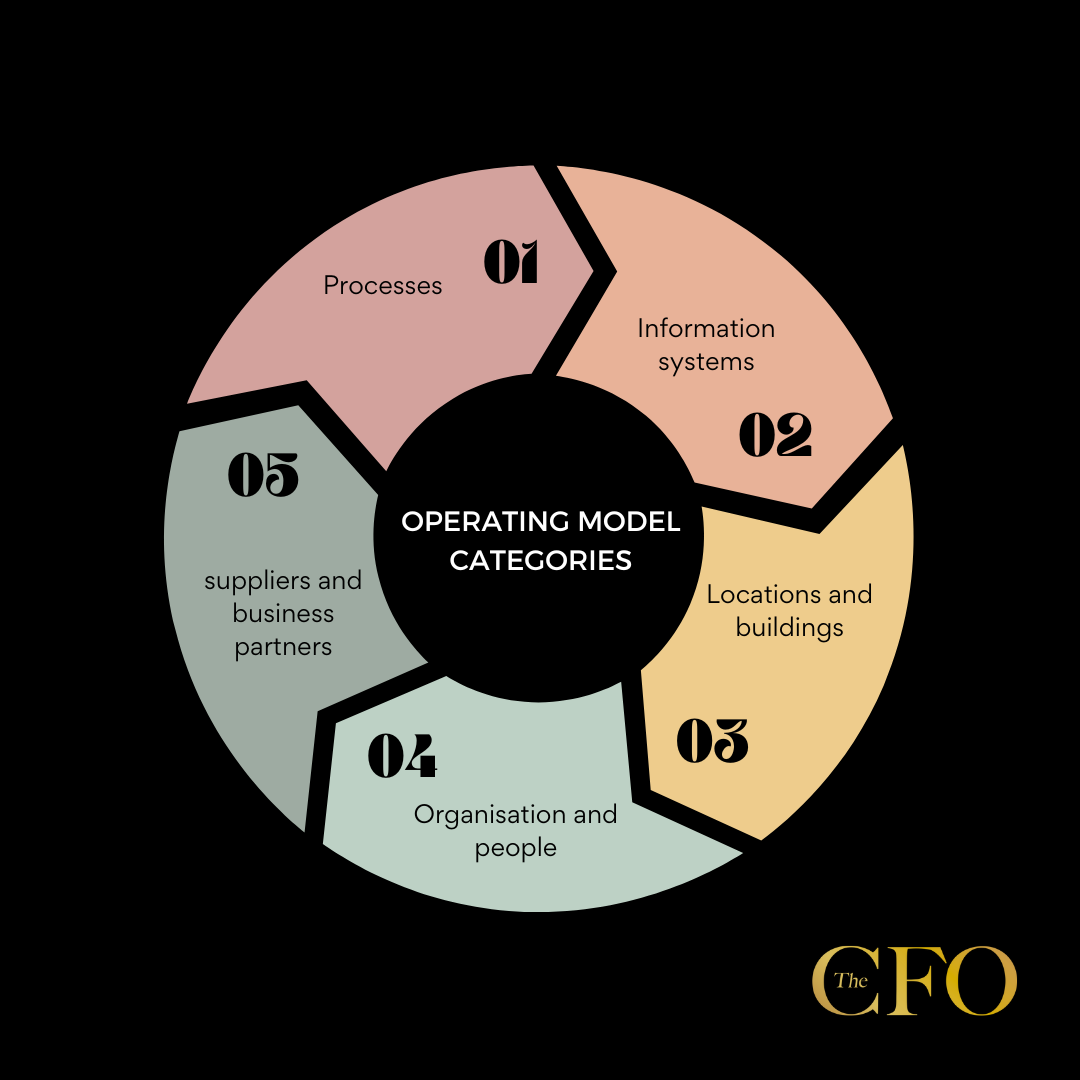At its simplest, a business model explains how a business solves a problem or fulfils a need or want that customers are prepared to pay enough for to enable it to make money.
A business model must consider stakeholders beyond the customer, and capital beyond financial capital, to be viable and resilient in today’s volatile and uncertain business ecosystems.
Talented and engaged workforces are key to the innovation necessary for keeping products and services relevant to customers and maintaining the competitive edge of a business.
Shareholders want adequate and predictable returns, and customers are becoming increasingly aware of businesses’ role in operating harmoniously with societies and our natural environment.
Operating models
As distinct from the business model, an operating model consists of five categories:

It can be characterised as ‘how we do things around here’.
The operating model drives operational excellence; the business model is how customer value is created. A business can increase its competitiveness and resilience by improving its operations.
However, all businesses are continuously seeking to improve their operating models, for example, by outsourcing or offshoring non-core activities and automating processes. Any competitive advantages gained through such efforts tend to be transient.
Changing a business model
On the other hand, changing a business model involves exploiting an unmet opportunity or responding to competitor actions. A good example of a new business model is how media distribution moved from physical media sold in stores and cinemas to being sold or rented digitally.
This change fulfilled an unmet (and at the time unknown) need that disrupted the business models of incumbent businesses. Incumbents could not fight the disrupters merely by improving their operating models; their customers would have left them regardless of how well they improved their operating models.
The CGMA Business Model Framework is a useful way of examining your own business model.
Keeping the business and operating models under review
Since businesses need both a business and an operating model, distinguishing between them might seem academic. However, it is how they are thought about that is important rather than what they are called.
Leaders must be alert to the possibility of business model disruptions. Essentially, they must be on the lookout for ways in which their customers could be served better – and often this is far from obvious. The CGMA Horizon Scanner is a handy tool for keeping your business model under review.
At the same time, businesses should continuously seek to refine their operating models to maintain their competitiveness, especially in markets that are crowded with businesses offering similar or substitute products and services. Keeping your operating model competitive should be an ongoing effort.
The role of the finance team
Crucially, businesses need management information on both their business and operating models to inform decisions and action. Often, management information to provide insight into business models will include data on product and service performance, customer satisfaction and preferences, competitor activity, substitute and similar products, and market share.
Management information on the operating model typically includes data that provides insight into the efficiency and effectiveness and economy of internal and outsourced business activities and supply chains.
It is prudent to adopt a multi-capital, multi-stakeholder approach when evaluating this information. Thinking in terms of multiple capitals is a great way to make sure that you do not ignore issues like sustainability.
In a similar way, you want management information representing all the organisation’s stakeholders to develop a more complete picture of the opportunities available to you and the associated risks. Tools like the business model canvas allow you to organise the information you gather in such a way as to make it useful for taking strategic decisions about the future shape of the business and its operations.
Fundamentally, all organisations are operating in a constantly changing environment. Keeping the business and operating models under constant evaluation and review allows finance leaders to drive business model responsiveness and operating model competitiveness.
Was this article helpful?
YesNo


